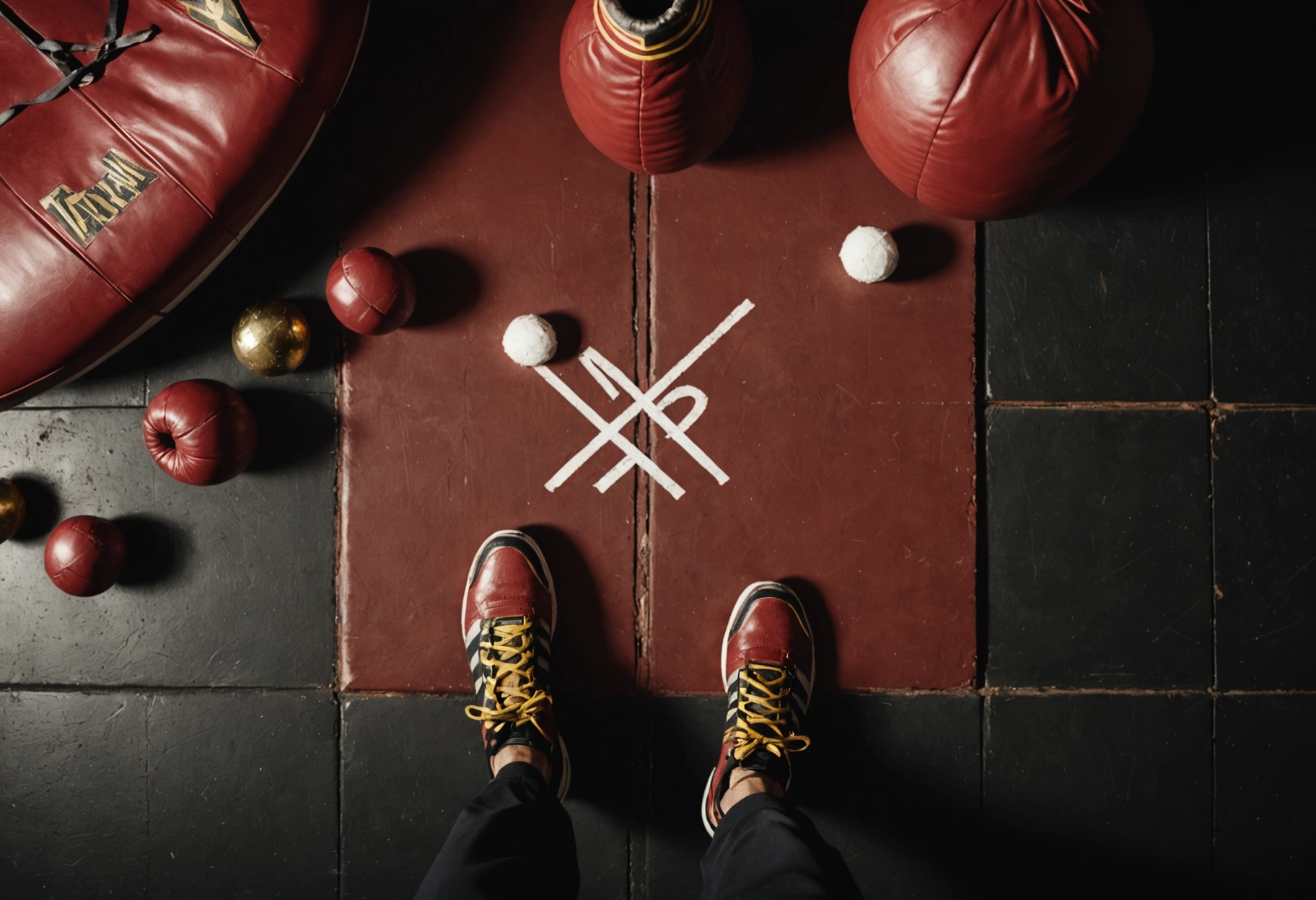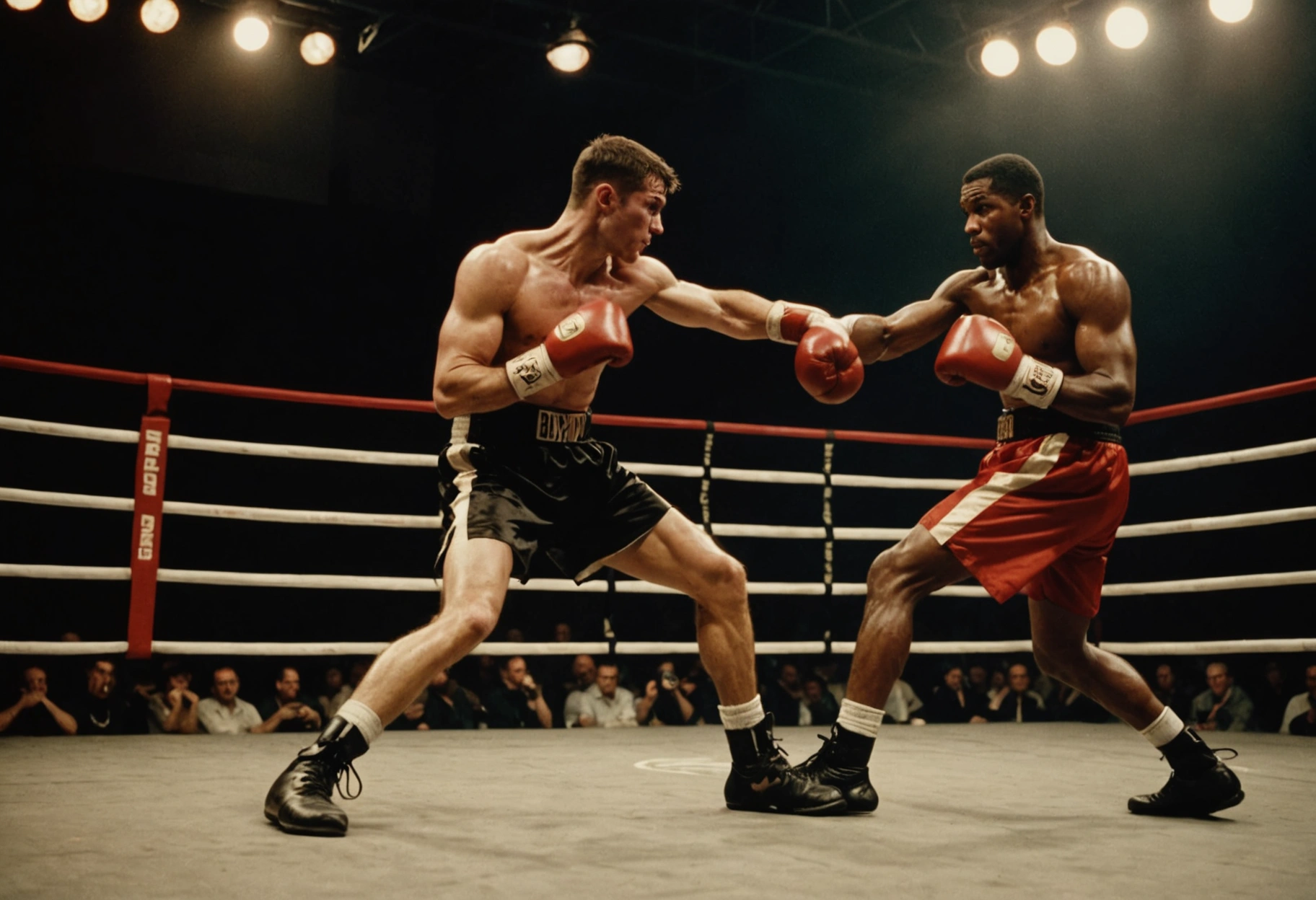Boxing Footwork 101: Essential Steps for a Winning Game
In the world of boxing, power punches and fierce jabs often take the spotlight, but what truly sets successful boxers apart is their footwork. Mastering the art of moving efficiently around the ring is crucial for both offensive and defensive strategies. Whether you’re a novice or an experienced pugilist, understanding the fundamentals of boxing footwork can significantly enhance your performance. Let’s delve into the essential steps that can transform your game and help you outmaneuver your opponents.
The Importance of Footwork in Boxing
Footwork in boxing isn’t just about moving around the ring; it’s about maintaining balance, creating angles, and setting the pace of the fight. Proper footwork can help you dodge punches, deliver more powerful blows, and conserve energy throughout a match. Moreover, it plays a pivotal role in controlling the distance between you and your opponent, which is essential for both offensive and defensive tactics.
Great footwork enables a fighter to transition seamlessly between attack and defense. By mastering footwork, boxers can create opportunities for counterattacks and exploit their opponent’s weaknesses. It’s no surprise that legendary fighters like Muhammad Ali and Floyd Mayweather Jr. have been celebrated not only for their punching power but also for their extraordinary footwork.
Basic Footwork Techniques
Before delving into advanced footwork techniques, it’s imperative to master the basics. These fundamental movements form the foundation of all other footwork in boxing:

- Stance: A proper stance is the cornerstone of effective footwork. Boxers should maintain a balanced stance with their feet shoulder-width apart, knees slightly bent, and weight evenly distributed. This position allows for quick movements and provides a stable base for throwing punches.
- Step and Slide: The step and slide is a basic movement that involves stepping forward with one foot while sliding the back foot into position. This technique helps maintain balance and positioning while moving forward or backward in the ring.
- Pivot: Pivoting involves rotating on the ball of the lead foot while swinging the rear foot around. This technique is crucial for changing angles and creating openings for punches.
- Shuffle: The shuffle allows boxers to move laterally while maintaining their stance. This movement is essential for dodging punches and creating offensive opportunities.
Advanced Footwork Techniques for Competitive Edge
Once the basics are second nature, it’s time to explore advanced footwork techniques that can give you a competitive edge in the ring:
- Lateral Movement: Mastering lateral movement enables boxers to circle their opponents, making it difficult for them to land punches. It involves quick sidesteps and is particularly effective against aggressive fighters who rely on forward momentum.
- Feints and Shifts: Combining footwork with feints can confuse opponents and create openings. A feint involves misleading the opponent with a false movement, while a shift involves changing stances to catch the opponent off guard.
- In-and-Out Movement: This technique involves quickly moving in to deliver a punch and then retreating to a safe distance. It requires precise timing and helps avoid counter punches.
For a deeper understanding of advanced techniques, you might want to explore this comprehensive guide on advanced footwork.
The Role of Balance and Coordination
Balance and coordination are the unsung heroes of effective footwork. Without them, even the most skilled movements can fall flat. Maintaining balance ensures that you can move quickly and change directions without losing your footing. Coordination, on the other hand, allows you to synchronize your movements with your punches, making your attacks more powerful and efficient.

Practicing drills that focus on balance and coordination is essential for any boxer. Simple exercises like jumping rope or performing agility ladder drills can significantly enhance your ability to move fluidly in the ring. For more tips on balance exercises, check out this resource on balance and coordination drills.
Common Mistakes and How to Avoid Them
Even seasoned boxers can fall into bad habits when it comes to footwork. Recognizing and correcting these mistakes can make a significant difference in your performance:
- Overstepping: Taking steps that are too big can throw off your balance and make you vulnerable to counterattacks. Focus on taking small, controlled steps to maintain stability.
- Crossing Feet: Crossing your feet while moving can lead to tripping and loss of balance. Always keep your feet apart to ensure a stable base.
- Flat-footedness: Staying flat-footed limits your movement speed and agility. Practice staying on the balls of your feet to enhance your mobility.
For a deeper dive into common mistakes and how to correct them, consider reading this detailed analysis of footwork errors.
Training Footwork for Different Boxing Styles
Different boxing styles require unique footwork adaptations. Whether you’re a brawler, an out-boxer, or a counterpuncher, your footwork should complement your fighting style:

- Brawler: Brawlers rely on close-range combat and need footwork that allows them to close the distance quickly. Practicing quick forward movements and lateral shuffles can be beneficial.
- Out-Boxer: Out-boxers depend on speed and agility to maintain distance from their opponents. Emphasizing lateral movements and in-and-out techniques is crucial for this style.
- Counterpuncher: Counterpunchers capitalize on their opponent’s mistakes. Their footwork should focus on evasive maneuvers and quick pivots to create counterattack opportunities.
Understanding how to tailor your footwork to your boxing style can significantly improve your effectiveness in the ring. For more insights, take a look at this in-depth guide on boxing styles.
Takeaways
Footwork is a fundamental yet often overlooked aspect of boxing that can dramatically influence the outcome of a fight. Mastering the basics and advancing to more complex techniques can provide any boxer with the tools needed to control the ring, outmaneuver opponents, and deliver powerful punches. As you refine your footwork, remember that practice, balance, and coordination are vital for success. By integrating these elements into your training, you’ll be well on your way to developing footwork that is both strategic and effective.
For further reading on developing your boxing skills, you might want to visit this comprehensive resource on boxing skills.
Incorporating Footwork Drills into Your Training Routine
To truly excel in boxing footwork, incorporating specific drills into your training regimen is essential. These drills are designed to improve your agility, balance, and reaction time, ensuring that your footwork becomes second nature during a match. Here are some drills that can enhance your footwork skills:

- Shadow Boxing: Shadow boxing is an effective way to practice footwork without the pressure of an opponent. Focus on maintaining your stance and practicing movements like shuffles, pivots, and in-and-out steps. Visualize an opponent and adjust your footwork to anticipate their moves.
- Agility Ladder Drills: Using an agility ladder can significantly improve your foot speed and coordination. Practice different patterns such as lateral shuffles, in-and-out steps, and crossover steps. This not only enhances your footwork but also boosts your cardiovascular fitness.
- Ring Circles: This drill involves moving around the perimeter of the ring while maintaining your boxing stance. Practice moving in both directions, focusing on balance and maintaining a consistent rhythm. This drill is particularly useful for improving your lateral movement.
- Partner Drills: Working with a partner allows you to simulate real fight scenarios. Practice moving in response to your partner’s actions, focusing on maintaining distance and positioning. This can help you develop the ability to react quickly and adapt your footwork in the heat of battle.
For a detailed guide on implementing these drills, consider exploring this extensive resource on boxing footwork drills.
The Psychological Aspect of Footwork
While the physical components of footwork are crucial, the psychological aspect cannot be overlooked. Effective footwork requires mental sharpness, quick decision-making, and the ability to anticipate your opponent’s moves. Developing these mental attributes can greatly enhance the effectiveness of your footwork.
Visualization techniques can be particularly beneficial for improving your mental footwork game. By mentally rehearsing your movements and strategies, you can increase your confidence and reaction time in the ring. Additionally, studying your opponents and understanding their footwork patterns can give you a strategic advantage, allowing you to exploit their weaknesses.
For more on the mental side of boxing, consider reading this insightful article on the psychology of footwork.

Adapting Footwork for Different Opponents
Every opponent presents a unique challenge, and adapting your footwork to match their style is crucial for success. Understanding the strengths and weaknesses of different opponents can help you tailor your footwork strategy accordingly:
- Aggressive Opponents: Against aggressive fighters who constantly press forward, focus on lateral movement and in-and-out steps to maintain distance and create counter opportunities.
- Defensive Opponents: When facing a defensive boxer, use shuffles and pivots to close the distance and cut off the ring, forcing them into positions where they are less comfortable.
- Counterpunchers: Against counterpunchers, maintain unpredictable footwork patterns to avoid telegraphing your movements. Use feints and shifts to create openings without exposing yourself to counterattacks.
For more strategies on adapting footwork to different fighting styles, explore this comprehensive guide on footwork adaptation.
Elevate Your Boxing Game with Superior Footwork
In conclusion, mastering boxing footwork is an ongoing process that requires dedication, practice, and an understanding of both physical and mental components. By incorporating the basic and advanced techniques discussed, along with regular drills and psychological preparation, you can develop footwork that enhances every aspect of your boxing game. Remember, the goal is not just to move around the ring, but to do so with purpose, strategy, and confidence.
Footwork is the foundation upon which all great boxers build their success. By prioritizing this essential skill, you’ll not only improve your performance but also gain a competitive edge that can make all the difference in the ring. As you continue your journey in boxing, keep refining your footwork, and you’ll undoubtedly see the results in your overall fighting prowess.

